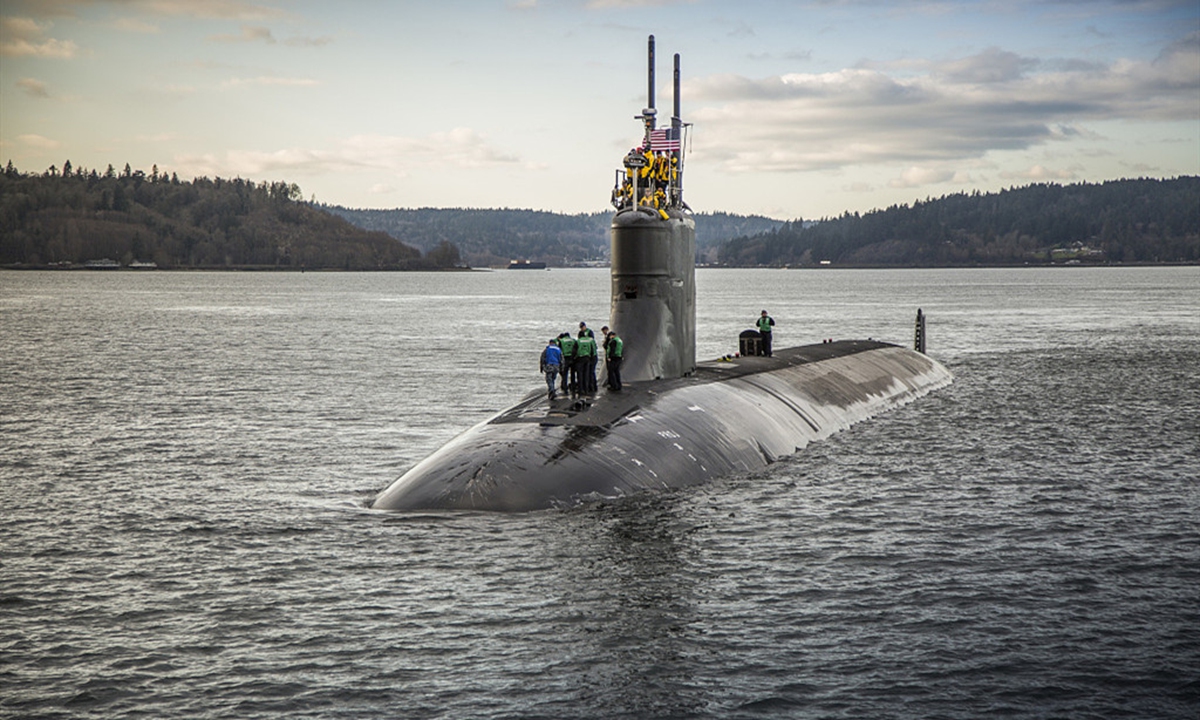
USS Connecticut File photo: VCG
On October 2, the
USS Connecticut (SSN-22), a Seawolf class nuclear powered attack submarine, "struck an object while submerged." The "object", it turned out, was an uncharted seamount. According to the US Navy, the accident occurred in the South China Sea, in international waters. Eleven sailors were injured, while the submarine suffered structural damage to its hull and was forced to surface before seeking shelter in Apra Harbor, Guam. While the extent of the structural damage has yet to be fully assessed by the US Navy, according to a spokesperson the vessel's nuclear power plant was undamaged and remains fully operational.
For its part, China criticized the actions of the American submarine. China claimed that its operations put regional shipping at risk as well as threatened the ecology of the South China Sea with radioactive pollution if the nuclear reactor of the
USS Connecticut had been compromised.
Beyond maritime safety issues, the Chinese were quick to criticize the presence of the American submarine in the South China Sea as unduly provocative. "The United States military has frequently dispatched advanced weapons platforms such as aircraft carriers, strategic bombers and nuclear submarines to flex its muscles and stir up trouble in the South China Sea under the pretext of freedom of navigation and overflight," a Chinese Defense Ministry spokesperson noted. "The United States should stop its close-in reconnaissance in the seas and skies near China's islands and reefs in the South China Sea, end its military deployments against China as well as so-called 'freedom of navigation operations' in the South China Sea."
For its part, while the US Navy has remained tight lipped about the mission being performed by the
USS Connecticut, a 353-foot boat commissioned in 1998 carrying a crew of 116. The timing of the incident coincided with major US-led naval exercises involving ships from six nations, including four aircraft carrier task groups, just outside of the South China Sea, in the waters off the southeast of Okinawa, Japan. This task force had earlier conducted maneuvers near the disputed waters of the South China Sea as part of so-called freedom of navigation exercises designed to challenge China's territorial claims.
The role played by the
USS Connecticut in these exercises, if any, is not known. The nuclear attack submarine was not assigned to either of the two US carrier battle groups participating in the joint naval exercises. Probably the
USS Connecticut was engaged in the kind of covert reconnaissance activities described in the Commander's Intent for the United States Submarine Force, published in 2018. "We are uniquely capable of, and often best employed in, stealthy, clandestine and independent operations," the document declared. "We exploit the advantages of undersea concealment which allow us to conduct undetected operations such as strategic deterrent patrols, intelligence collection, Special Operations Forces support, non-provocative transits, and repositioning."
Following the logic contained in the Commander's Intent, the
USS Connecticut could have been charting a new, covert passage that put the vessel near Chinese-controlled islands in the South China Sea. It may have also been tracking Chinese submarines that may have been deployed to keep tabs on the US-led joint naval exercises. The fact that the
USS Connecticut struck an uncharted seamount implies that the vessel was operating in waters not previously known to either its crew or the US Navy. Either activity, when carried out by a ship capable of employing up to 40 torpedoes or Tomahawk cruise missiles, would be viewed as extremely provocative by China, which has become the target of a major US military pivot that places preparation for a US-Sino conflict as its top priority.
The accident involving the
USS Connecticut should serve as a wakeup call for US political and military leadership that the game of cat and mouse being played in the South China Sea has the potential of turning deadly at a moment's notice. If the
USS Connecticut had struck a Chinese submarine, causing loss of life on either side along with potential radioactive contamination, what was a simple navigational error could have escalated into a major international incident. Likewise, the more the US military makes preparations for a war with China, the more China has a right to view provocative US military maneuvers (such as that undertaken by the
USS Connecticut) as a preamble to conflict. The accident of the
USS Connecticut provides the US and China with an opportunity to scale back provocative actions and rhetoric. We can instead search for diplomatic solution to the problems that currently divide us.
The author is a former US Marine Corps intelligence officer. opinion@globaltimes.com.cn




